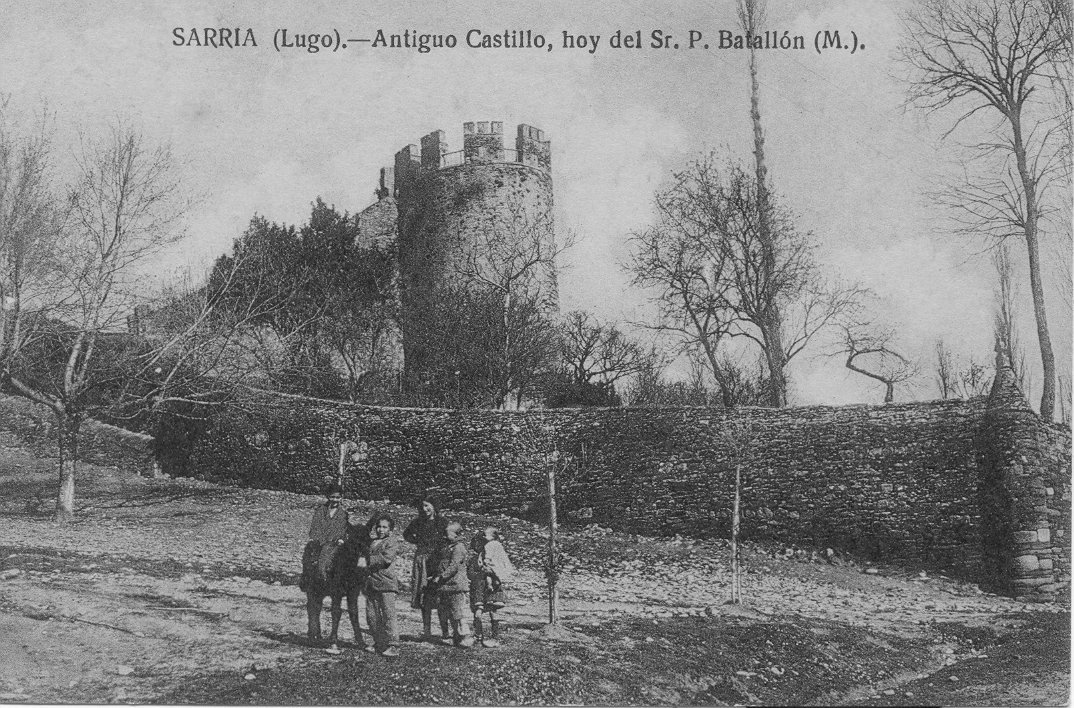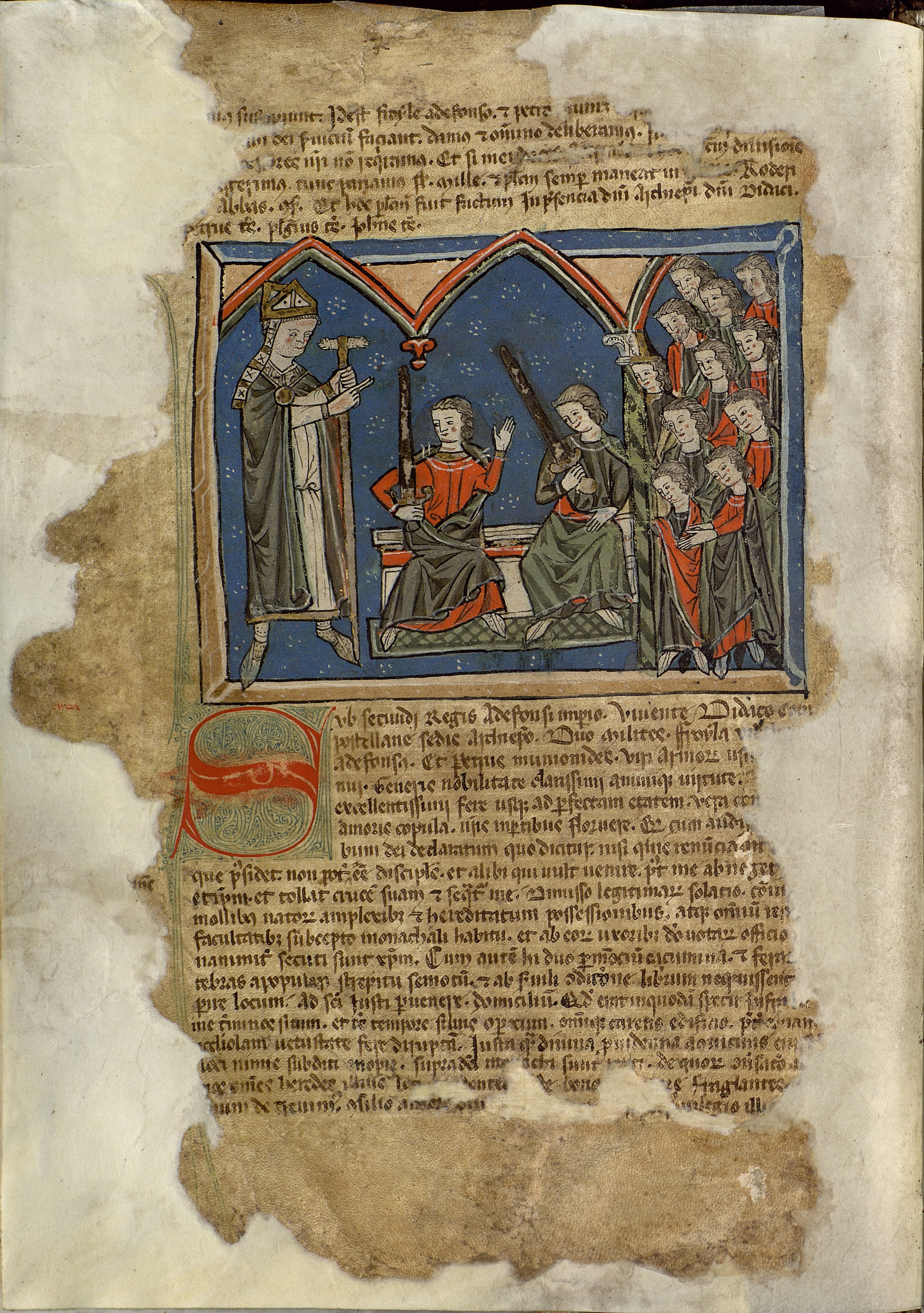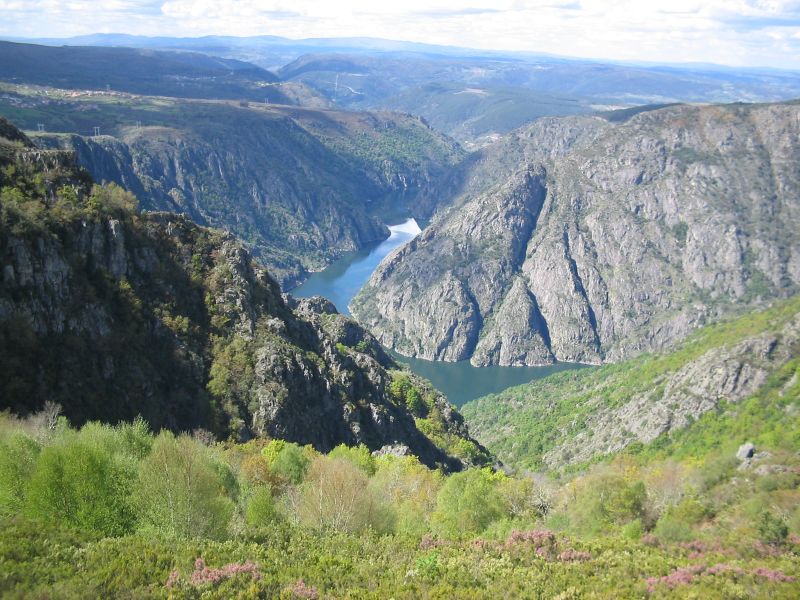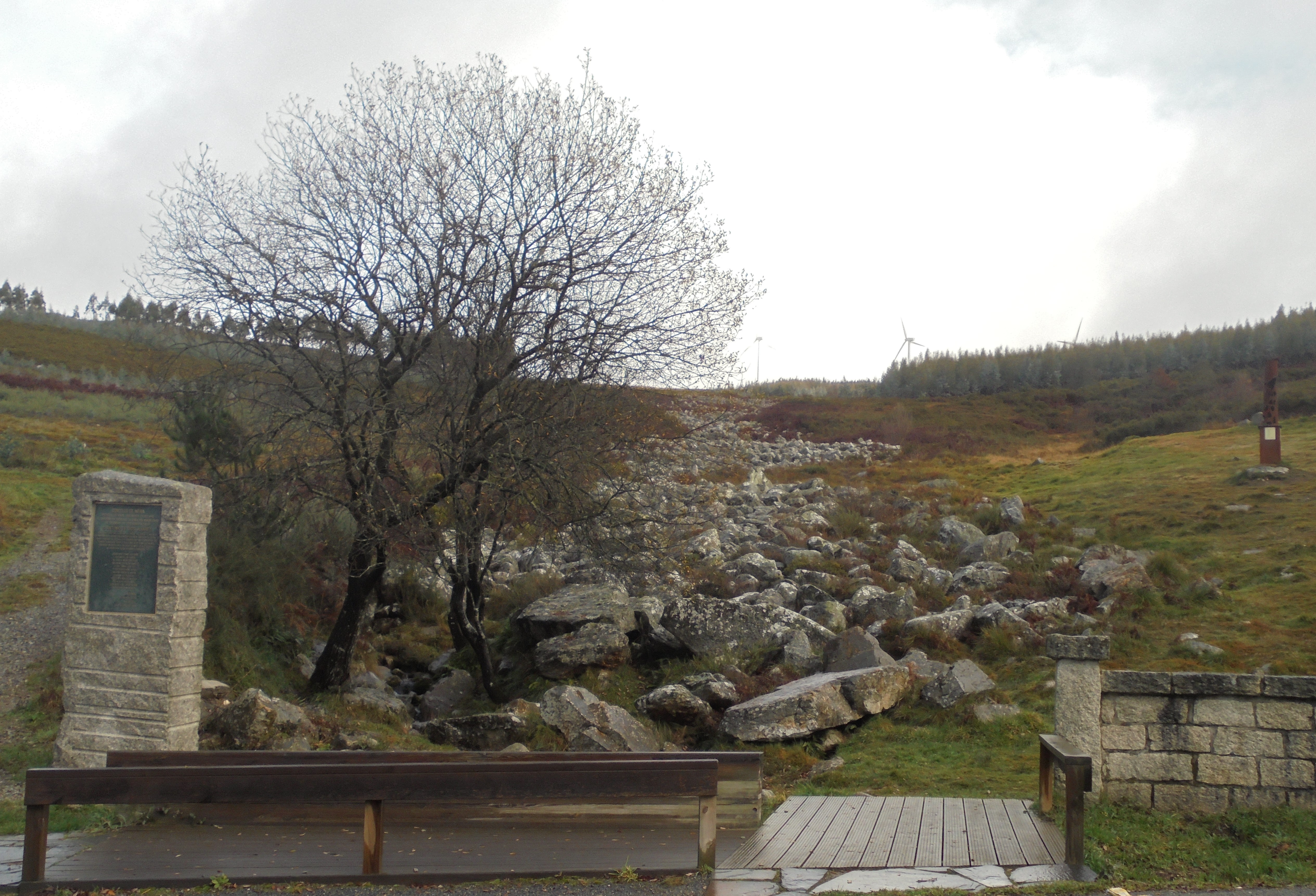|
Rodrigo Vélaz
Rodrigo Vélaz (died June 1144) was the "count of Galicia, who held Sarria" according to the near-contemporary '' Chronica Adefonsi imperatoris''. During his long public career he was the dominant figure in mountainous eastern Galicia while the House of Traba dominated its western seaboard. He served under three monarchs—Alfonso VI, Urraca, and Alfonso VII—and was loyal to all of them, never figuring in any rebellion. The contemporary ''Historia compostellana'' is a valuable source for his life, since there are no aristocratic archives surviving in Spain from this period. Rodrigo's career must be pieced together from the few references in the chronicles and the (copies of) charters preserved in various ecclesiastical archives.Barton (1997), 2. He was a son of Count Vela Ovéquiz and Aldonza Muñoz, daughter of Count Muño Fernández and Elvira.Barton (1997), 299. Rodrigo married Urraca Álvarez, daughter of Álvar Fáñez and Mayor Pérez, a daughter of Pedro Ansúrez. Rodrig ... [...More Info...] [...Related Items...] OR: [Wikipedia] [Google] [Baidu] |
Sarria 0021
Sarria is a municipality in the province of Lugo, northwestern Spain, in the autonomous community of Galicia. Sarria is the most populous town on the French Way in Galicia, with 13,700 inhabitants. It is head of the region and the most popular starting point for the Camino de Santiago; many pilgrims choose Sarria because the distance from this point to Santiago allows them to cover the necessary kilometers to reach the Compostela. King Alfonso IX of León died in Sarria in 1230 while making a pilgrimage to Santiago de Compostela. Artistic heritage Sarria's artistic heritage is primarily characterized by churches, which are essential to the Way of St. James. This includes the early-Gothic, 13th-century church, ''O Salvador,'' which is located on Rúa Maior. In this town, from its unusual rúa Maior, it is possible to see the only tower that remains of the medieval fortress belonging to the town called Fortress of Sarria A fortification is a military construction or build ... [...More Info...] [...Related Items...] OR: [Wikipedia] [Google] [Baidu] |
Cathedral Of Oviedo
The Metropolitan Cathedral Basilica of the Holy Saviour or Cathedral of San Salvador ( es, Catedral Metropolitana Basílica de San Salvador, la, Sancta Ovetensis) is a Roman Catholic church and minor basilica in the centre of Oviedo, in the Asturias region of northern Spain. The Cathedral of San Salvador of Oviedo today displays an array of architectural styles, from Pre-Romanesque to Baroque, including Romanesque, Gothic and Renaissance parts. History The church began as a large Pre-Romanesque basilica in the present location of the Gothic cathedral, but nothing more is known about that first building, built by order of King Alfonso II of Asturias. The cathedral was founded by King Fruela I of Asturias in 781 AD, and enlarged in 802 by his son Alfonso II of Asturias known as ''Alfonso the Chaste'', who made Oviedo the capital of Kingdom of Asturias, and resided in Oviedo with his court. He created the See of Oviedo in 810. The present edifice was begun by Bishop Gutierre of ... [...More Info...] [...Related Items...] OR: [Wikipedia] [Google] [Baidu] |
Zamora, Spain
Zamora () is a city and municipality of Spain located in the autonomous community of Castile and León. It is the capital of the province of Zamora. The city straddles the Duero river. With its 24 characteristic Romanesque style churches of the 12th and 13th centuries it has been called a "museum of Romanesque art". Zamora is the city with the most Romanesque churches in all of Europe. The most important celebration in Zamora is the Holy Week. Zamora is part of the natural ''comarca'' of Tierra del Pan and it is the head of the judicial district of Zamora. History The city was founded early in the Bronze Age and was later occupied during the Iron Age by the Celtic people of the Vacceos who called it Ocalam. After the Roman victory over the Lusitanian hero Viriathus the settlement was named by the Romans ''Occelum Durii'' or '' Ocellodurum'' (literally, "Eye of the Duero"). During Roman rule it was in the hands of the Vaccaei, and was incorporated into the Roman province of H ... [...More Info...] [...Related Items...] OR: [Wikipedia] [Google] [Baidu] |
Pedro Fróilaz De Traba
Pedro Fróilaz de Traba ('' fl.'' 1086–1126) was the most powerful secular magnate in the Kingdom of Galicia during the first quarter of the twelfth century. According to the ''Historia compostelana'', he was "spirited ... warlike ... of great power ... a man who feared God and hated iniquity," for Diego Gelmírez himself had "fed him, like a spiritual son, with the nutriment of holy teaching."Fletcher (1984), 37–38. Brought up at the court of the Emperor Alfonso VI, Pedro raised the future Emperor Alfonso VII in his household. Around the latter he and Diego formed a "Galician party" that dominated that region during the turbulent reign of Urraca (1109–26). In September 1111 they even had the child Alfonso crowned king at Santiago de Compostela, but it was Pedro who was ''imperator in orbe Galletiae'' ("emperor in the ambit of Galicia"). Widely travelled and well-connected, especially through the prestigious marriages of his many daughters—he had at least sixteen legitima ... [...More Info...] [...Related Items...] OR: [Wikipedia] [Google] [Baidu] |
Diego Gelmírez
Diego Gelmírez or Xelmírez ( la, Didacus Gelmirici; c. 1069 – c. 1140) was the second bishop (from 1100) and first archbishop (from 1120) of the Roman Catholic Archdiocese of Santiago de Compostela, Catholic Archdiocese of Santiago de Compostela in Galicia (Spain), Galicia, modern Spain. He is a prominent figure in the history of Galicia and an important historiographer of the Iberia of his day. Diego involved himself in many quarrels, ecclesiastical and secular, which were recounted in the , which covered his episcopacy from 1100 to 1139 and serves as a sort of ''Chronicle, gesta'' of the bishop's life. He was probably born at Catoira, where his father, Gelmiro or Xelmirio, was the custodian of the castle. He received an education at the court of Alfonso VI of León and Castile, Alfonso VI, king of Kingdom of León, León, Kingdom of Galicia, Galicia and Kingdom of Castile, Castile. In 1092, Raymond of Burgundy, Raymond, count of Galicia, named him his notary and secretary an ... [...More Info...] [...Related Items...] OR: [Wikipedia] [Google] [Baidu] |
Santiago De Compostela
Santiago de Compostela is the capital of the autonomous community of Galicia, in northwestern Spain. The city has its origin in the shrine of Saint James the Great, now the Cathedral of Santiago de Compostela, as the destination of the Way of St. James, a leading Catholic pilgrimage route since the 9th century. In 1985, the city's Old Town was designated a UNESCO World Heritage Site. Santiago de Compostela has a very mild climate for its latitude with heavy winter rainfall courtesy of its relative proximity to the prevailing winds from Atlantic low-pressure systems. Toponym ''Santiago'' is the local Galician evolution of Vulgar Latin ''Sanctus Iacobus'' " Saint James". According to legend, ''Compostela'' derives from the Latin ''Campus Stellae'' (i.e., "field of the star"); it seems unlikely, however, that this phrase could have yielded the modern ''Compostela'' under normal evolution from Latin to Medieval Galician. Other etymologies derive the name from Latin ''compositum'', ... [...More Info...] [...Related Items...] OR: [Wikipedia] [Google] [Baidu] |
Larín
Larin or Larín is a given name and a surname. As a surname, in Slavic countries it is used only for men, alongside its feminine counterpart Larina. It may refer to ;Given name *Larin Paraske (1833–1904), Izhorian oral poet ;Pen name *Larin-Kyösti, pseudonym of the Finnish poet Karl Gustaf Larson (1873–1948) ;Surname *Alexander Larín (born 1992), Salvadoran association-football player *Anna Larina (1914–1996), second wife of the Bolshevik leader Nikolai Bukharin *Cyle Larin (born 1995), Canadian association-football player *Dmitry Larin (born 1973), Russian association-football manager *Ivan Larin (1926–1986), Russian football-player and coach * Kim McLarin, African-American novelist * Liz Larin, Detroit-based singer-songwriter * Oleksiy Larin (born 1994), Ukrainian football-player *Rafael Menjívar Larín (1935–2000), Salvadoran economist and politician *Sergei Larin (born 1986), Kazakhstani football-manager and former player *Sergej Larin (1956–2008), Soviet operat ... [...More Info...] [...Related Items...] OR: [Wikipedia] [Google] [Baidu] |
Rábade
Rábade or San Vicenzo de Rábade is a town in the northwest of Spain in the province of Lugo. It is the smallest municipality in Galicia. Rábade has a population of about 1500 and an area of 5.2 km². It is at an altitude of 400 meters. Until 28 May 1925 Rábade was part of Begonte. Rábade holds market days on the 2nd and 22nd of every month and on those days you can eat a traditional dish: octopus An octopus ( : octopuses or octopodes, see below for variants) is a soft-bodied, eight- limbed mollusc of the order Octopoda (, ). The order consists of some 300 species and is grouped within the class Cephalopoda with squids, cuttle .... It has celebrations on 22 and 23 January and 15 August. The Copa Miño de Piragüismo is a local tourist attraction. References External linksConcello de Rabadeofficial website Municipalities in the Province of Lugo {{Galicia-geo-stub ... [...More Info...] [...Related Items...] OR: [Wikipedia] [Google] [Baidu] |
Merindad
''Merindad'' () is a Mediaeval Spanish administrative term for a country subdivision smaller than a province but larger than a municipality. The officer in charge of a merindad was called a merino, roughly equivalent to the English ''count'' or ''bailiff''. It was used in the kingdoms of Castile and Navarre. Connected to the birth of Castile, the Merindades, standing for a northernmost ''comarca'' of the province of Burgos, was part of the creation of the administrative division by King Peter. Currently, the Foral Community of Navarre is still divided into five ''merindades'' standing for different judicial districts. The historic ''Merindad de Ultrapuertos'' lying to the north of the Pyrenees is nowadays Lower Navarre. Administratively, they have been substituted by the '' partido judicial''. In Biscay, the ''mancomunidades comarcales'' keep the place of the old ''merindades'', such as Duranguesado. See also * Partidos of Buenos Aires, a second-level administrative subdiv ... [...More Info...] [...Related Items...] OR: [Wikipedia] [Google] [Baidu] |
Sil (river)
The Sil is a river in León (Castile and León) and Galicia, Spain, a tributary of the Miño. Its total length is . The source of the Sil is in the Cantabrian Mountains in the Leonese town of Villablino. It flows through the provinces of León and Ourense. The largest city on the Sil is Ponferrada (León). The Sil flows into the Miño upstream from Ourense. Mouth The river joins the Miño river in Os Peares, in the province of Ourense. Generally, the hierarchy between rivers is performed by taking into account which junction has more volume and length. In this case, as with the Esla and Pisuerga with the Duero, the Sil has flows larger than the Miño at the junction. There is a saying that goes, "The Miño has the fame, but the Sil gives it water" (in Spanish, ''El Miño lleva la fama y el Sil le da el agua''). The Sil river also surpasses the Miño in length by about . Course The Sil runs through the León districts of Babia, Laciana, El Bierzo and La Cabrera, and Oure ... [...More Info...] [...Related Items...] OR: [Wikipedia] [Google] [Baidu] |
Minho River
The Minho ( , ) or Miño ( , , ; cel-x-proto, Miniu) is the longest river in Galicia, sharing the border with Portugal, with a length of . By discharge, it is the fourth river of the Iberian peninsula, after the Douro, Ebro, and Tagus. The Minho waters vineyards and farmland, is used to produce hydroelectric power, and also delineates a section of the Spanish–Portuguese border. In ancient English maps, it appears as Minno. The source of the Minho lies north of Lugo in Galicia, in a place called ''Pedregal de Irimia''. After about , the river passes just south of the walls of this old Roman city, discharging in average 42 m3/s, and flows south through canyons until the valley widens north of Ourense. The river has been harnessed in reservoirs from Portomarín to Frieira. Along its length, it has the following reservoirs: Belesar with , Peares with , Velle with , Castrelo with and Frieira with . About north of Ourense at Os Peares, the Minho, with a discharge of 102 m ... [...More Info...] [...Related Items...] OR: [Wikipedia] [Google] [Baidu] |

.jpg)



